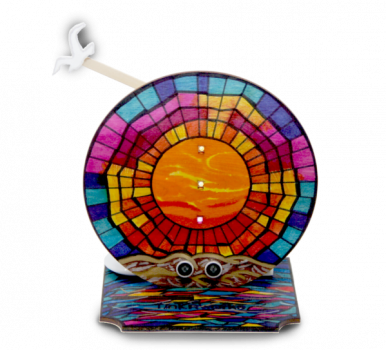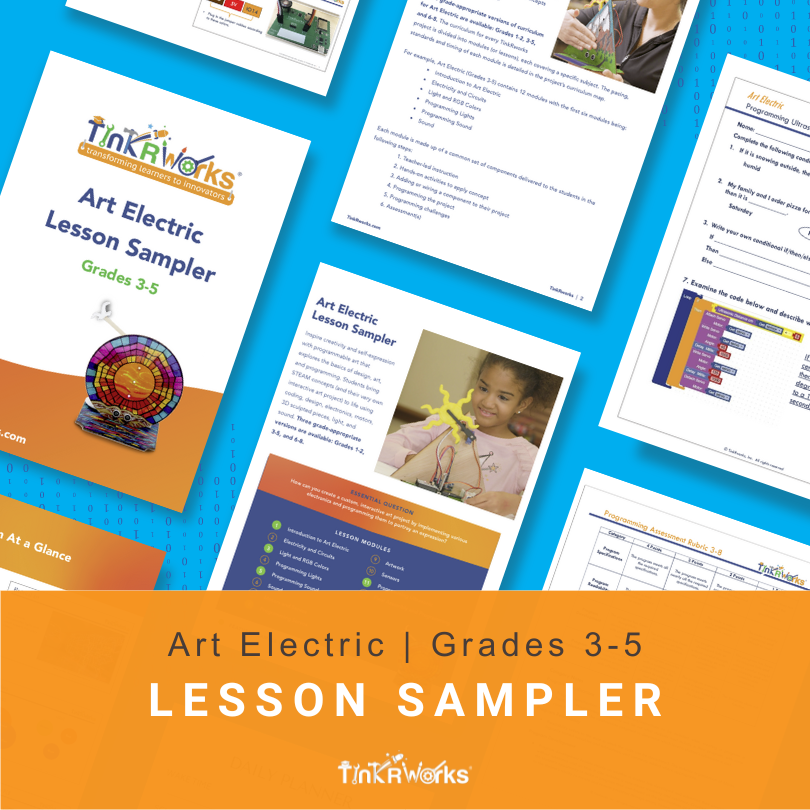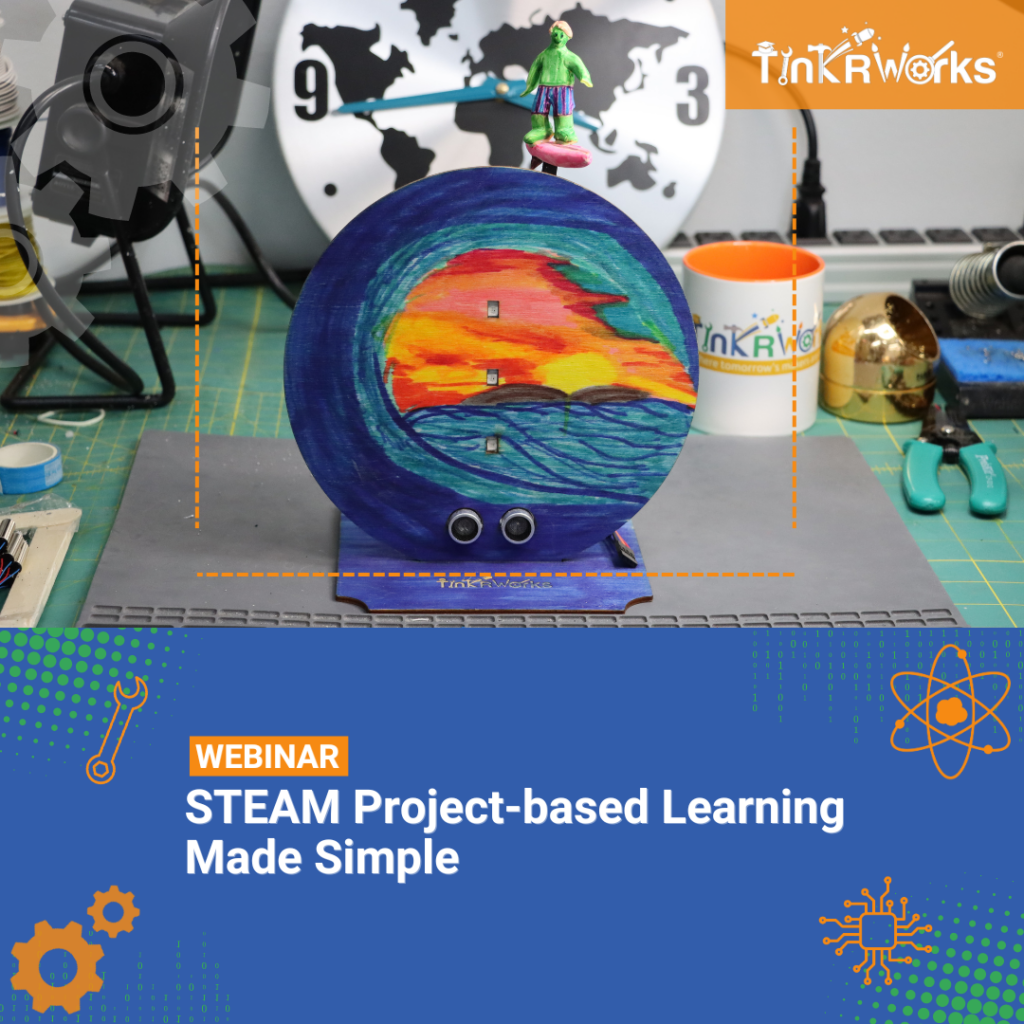
Ignite Imagination with Programmable Art!
Fuel students’ creativity and self-expression with a hands-on art project that blends design, art, and programming! Using coding, design, electronics, motors, 3D sculpted pieces, light, and sound, students will bring their own interactive art creations to life while exploring STEAM concepts in a dynamic way. This project encourages critical thinking and innovation, allowing students to experience the intersection of technology and art. Available in three grade-appropriate versions: Grades 1-2, 3-5, and 6-8, it offers a customizable and engaging learning experience for every age group.
Key Concepts
Amplitude, Ardiuno, Atoms, Angles, CAD, Coding, Circuits, Conditionals, Conductors, Echolocation, Electricity, Electrons, Frequency, Laser cutter, LED, Light waves, Loops, Motors, MP3 Player, PCB, RGB, RGB pixels, Servos, Subroutines, Ultrasonic sensor, Vibration, Wavelength
Essential Question
How can you create a custom, interactive art project by implementing various electronics and programming them to portray an expression?
Summary of Standards
Students will operate software, use technical terminology, follow algorithms, and develop programming plans.
Common Core ELA
Students will participate in collaborative discussions, use and acquire new grade-level vocabulary, recall information from text that is presented orally and through media, and describe connections between text.
Next Generation Science Standards (NGSS)
Students will plan and carry out investigations, use mathematics and computational thinking, construct explanations, and discover design solutions.
Texas Essential Knowledge and Skills (TEKS)
Students will work collaboratively with others, listen actively to group discussions, engage in conversation by asking relevant questions, and use illustrations and texts to learn or clarify the meanings of words. They will recognize characteristics and structures of informational text and be able to retell and paraphrase texts.
Computer Science Teaching Association Standards (CSTA)
Students will describe how internal and external parts of computing devices function to form a system; model how hardware and software work together; use data to highlight relationships, predict outcomes, and communicate; and create programs that include sequences, events, loops, and conditionals.
Common Core ELA
Students will participate in collaborative discussions, use and acquire new grade-level vocabulary, recall information from text that is presented orally and through media, and describe connections between text.
Common Core Math
Students will program their project’s servo and measure the angles that it creates.
Next Generation Science Standards (NGSS)
Students will plan and carry out investigations, use mathematics and computational thinking, and explore cause and effect relationships.
Texas Essential Knowledge and Skills (TEKS)
Students will work collaboratively with others, listen actively, and ask relevant questions to clarify information. They will evaluate details read to determine key ideas, and use context within and beyond a sentence to determine the meaning of unfamiliar words and multiple-meaning words. They will use newly acquired vocabulary as appropriate and make inferences and use evidence to support understanding.
Computer Science Teaching Association Standards (CSTA)
Students will design projects that combine hardware and software components, create clearly named variables that represent data, design and develop programs that combine control structures, nested loops, and compound conditionals, and systematically test and refine programs.
Common Core ELA
Students will participate in collaborative discussions, use and acquire new grade-level vocabulary, recall information from text that is presented orally and through media, and describe connections between text.
Common Core Math
Students will use variables to represent quantities.
Next Generation Science Standards (NGSS)
Students will use mathematics and computational thinking, and explore energy, matter, patterns, systems, and system models.
Texas Essential Knowledge and Skills (TEKS)
Students will participate in student-led discussions by eliciting points of and considering suggestions from other group members, taking notes, and identifying points of agreement and disagreement. They will listen actively to interpret a message, ask clarifying questions, and respond appropriately. Students will make inferences and use evidence to support understanding.
Explore More About Art Electric
Get a sneak peek at our STEAM curriculum and discover how Art Electric sparks creativity, coding skills, and hands-on learning in the classroom!
Tune in to our on-demand webinar and discover the fun of Art Electric and how it blends electronics, coding, and art into one creative adventure!
Unleash Creativity in Your Classroom—Get in Touch to Learn More!
Fill out the form below or schedule a demo to learn more. Our team will personally reach out to answer questions, discuss pricing, and guide you through the next steps.


